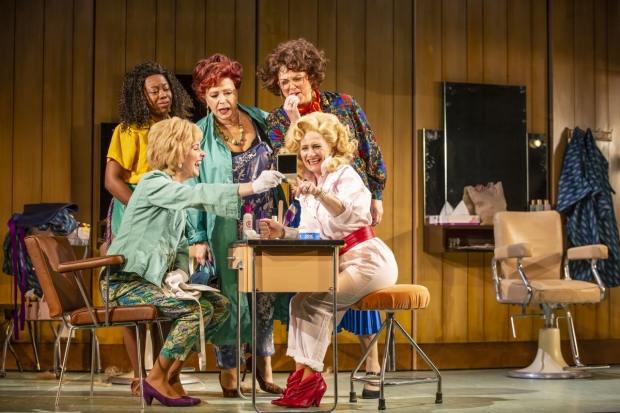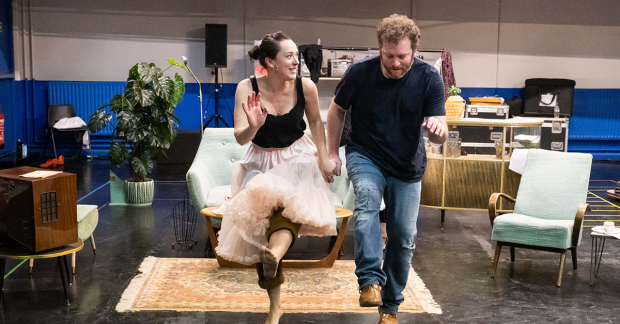”Steel Magnolias” at Richmond Theatre and on tour – review

© Pamela Raith
Famously adapted from the stage into a hit movie, Robert Harling’s Steel Magnolias (based, in part, on Harling’s sister, who died of complications from type 1 diabetes) centres around a group of women who all meet in a hair and beauty salon every few months and bond together as a community. The 1989 film features an all-star cast including Dolly Parton and Sally Field, while also marking Julia Roberts’ first major film role which won her a Golden Globe.
In director Anthony Banks’ touring production we open on designer Laura Hopkin’s realistic and subtly camp salon, with hints of pink dotted around everywhere from the lining of chairs, a radio and even the cushions of a sofa. Pictures and quotes from Parton line the walls (“the higher the hair, the closer to God”) and a neon sign that reads ‘Truvy’s’ flashes in the window.
Good-natured stylist Truvy (Lucy Speed) runs the salon with her sweet new assistant, Annelle (Elizabeth Ayodele), who has a mysterious past. The latter has a lovely character arc and blossoms throughout the changing seasons of the show. Laura Main (Call the Midwife) is an annoyingly high-pitched, ever-anxious M’Lynn, mother of Shelby (Diana Vickers), her cool and confident young daughter. Absolutely Fabulous‘ Harriet Thorpe shines as the cynical twice divorcée, Ouiser, who has been “in a bad mood for 40 years”. Caroline Harker completes the cast as Clairee, the practical ex-wife of the mayor who has an air as though she has seen it all.
There are some strange lighting choices. The whole set is held in a rectangular TV-like box with a shining blue-pink light that blinds the audience when it turns on. Throughout the show, there is darkness outside the window, so that even when the actors talk as though it is daytime, it looks like the middle of the night.
On the whole, characters don’t feel fleshed-out (only a handful of scenes pass the Bechdel test, for example). The script’s strength therefore lies in its humour, but in the first half, the production only draws sporadic titters from the audience. There are a couple of jokes in the second half that draw real laughter but, on the whole, most don’t land. Towards the end, a sad scene feels drawn out and overdone.












